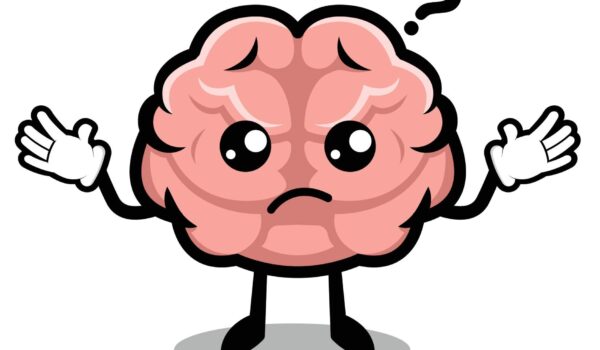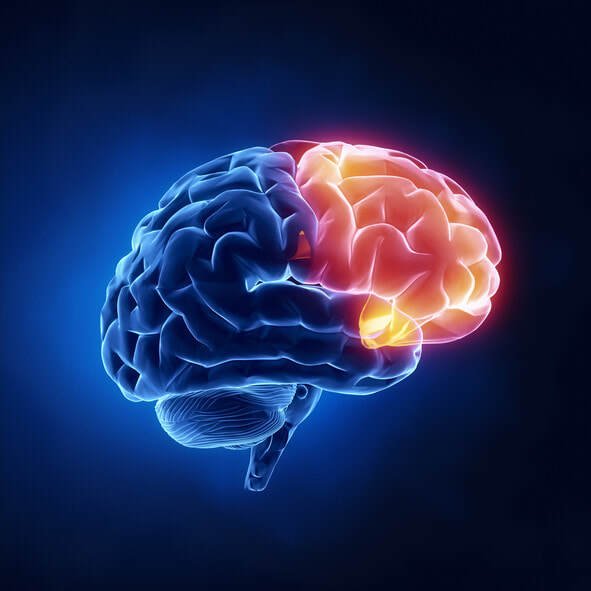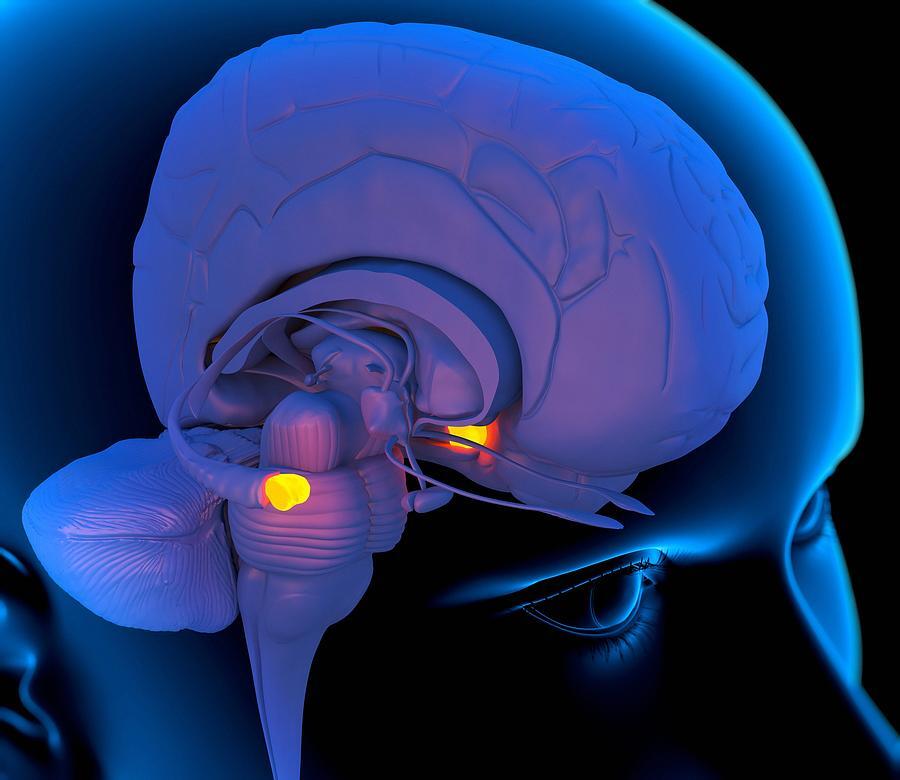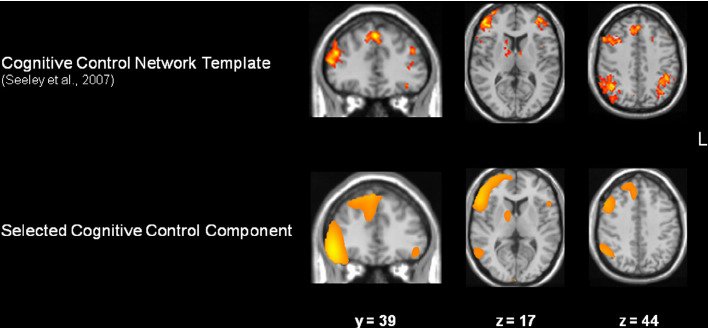Where is Decision Making in the Brain?

Decision-making is a fundamental aspect of human life, intricately linked to cognition, psychology, and neurobiology. Whether choosing what to eat for breakfast or making more complex life decisions, understanding “where is decision making in the brain” involves exploring the dynamic interplay of neural circuits and cognitive processes. Neuroscientists and psychologists have long studied how decisions are made in the brain, revealing that this process is not confined to a single region but rather involves multiple areas working together. This article delves into the brain regions and mechanisms responsible for decision-making, shedding light on the complexity of this cognitive function.
The Role of the Prefrontal Cortex

The prefrontal cortex (PFC) plays a central role in understanding “where is decision making in the brain.” Located in the front part of the brain, the PFC is often referred to as the brain’s executive center, responsible for higher-order functions such as planning, problem-solving, and decision-making. Within the PFC, specific regions contribute to different aspects of decision-making.
- Dorsolateral Prefrontal Cortex (DLPFC): The DLPFC is crucial for cognitive control and working memory. It helps maintain and manipulate information when making decisions. For example, when deciding between two options, the DLPFC allows individuals to weigh the pros and cons by holding information about potential outcomes in mind.
- Ventromedial Prefrontal Cortex (vmPFC): The vmPFC is involved in evaluating the value of different options, especially in terms of rewards and emotions. It helps individuals make decisions based on subjective preferences and emotional responses. This region integrates emotional and social information, contributing to decisions that involve personal values or social consequences.
- Orbitofrontal Cortex (OFC): The OFC, closely related to the vmPFC, is involved in evaluating risks and rewards, particularly in complex and uncertain situations. It helps individuals assess the potential outcomes of their decisions, taking into account factors like risk, uncertainty, and delayed gratification.
These subregions of the prefrontal cortex are key to understanding “where is decision making in the brain” because they represent the cognitive processes that underpin decision-making. However, decision-making is not limited to the prefrontal cortex; other brain regions also play crucial roles.
The Basal Ganglia and Reward Processing
Another important aspect of “where is decision making in the brain” is the basal ganglia, a group of subcortical structures that contribute to decision-making by processing rewards and guiding behavior. The basal ganglia are involved in reinforcement learning, where decisions are influenced by the outcomes of previous actions.
- Nucleus Accumbens (NAc): The nucleus accumbens is a core component of the brain’s reward system, particularly sensitive to dopamine, a neurotransmitter associated with pleasure and reward. When making decisions, the NAc helps assess the potential rewards of different options, influencing behavior toward more rewarding choices.
- Dorsal Striatum: The dorsal striatum, also part of the basal ganglia, is involved in habit formation and procedural learning. It plays a role in decisions that become automatic or habitual, as opposed to those that require active deliberation. This region helps explain why some decisions are made almost instinctively, without conscious thought.
The basal ganglia work closely with the prefrontal cortex to shape decision-making processes, particularly when rewards and habits are involved. Together, they contribute to understanding “where is decision making in the brain” from a cognitive and neural perspective.
The Role of the Amygdala and Emotion

Emotions play a significant role in decision-making, often guiding choices in ways that rational analysis alone cannot explain. The amygdala, a small almond-shaped structure deep in the brain, is central to processing emotions and has a powerful influence on decision-making.
- Amygdala and Fear-Based Decisions: The amygdala is particularly sensitive to fear and threat-related stimuli. When faced with a decision involving risk or danger, the amygdala can trigger a fight-or-flight response, influencing the individual to choose the safer or less risky option. This emotional processing is a critical component of “where is decision making in the brain,” especially in situations involving survival or high stakes.
- Amygdala and Social Decisions: Beyond fear, the amygdala also plays a role in social decision-making. It helps individuals assess the emotional expressions and intentions of others, guiding decisions that involve social interactions. For instance, when deciding how to respond to someone in a conversation, the amygdala contributes to interpreting social cues and determining an appropriate response.
The interaction between the amygdala and the prefrontal cortex highlights the complexity of “where is decision making in the brain.” While the prefrontal cortex is responsible for logical and rational thinking, the amygdala provides an emotional context that can influence decisions in subtle but powerful ways.
The Anterior Cingulate Cortex and Conflict Monitoring
The anterior cingulate cortex (ACC) is another region that contributes to decision-making by monitoring conflicts and evaluating choices. Located between the prefrontal cortex and limbic system, the ACC acts as a bridge between cognitive control and emotional processing.
- Conflict Monitoring: The ACC is particularly active when individuals face decisions involving conflicting options or when the outcome is uncertain. It detects discrepancies between expected and actual outcomes, helping to adjust future decisions. For instance, if a decision turns out to be worse than expected, the ACC helps modify behavior to avoid similar outcomes in the future.
- Error Detection and Adaptation: The ACC is also involved in error detection and adaptation. When a mistake is made, the ACC signals the brain to adjust its decision-making strategy, making it an essential component of “where is decision making in the brain.” This function is crucial for learning from past experiences and improving decision-making accuracy over time.
The ACC’s role in monitoring conflicts and adapting behavior adds another layer to the complexity of decision-making in the brain, emphasizing the interplay between different cognitive processes.
The Influence of the Insula on Interoceptive Awareness
The insula, a region of the brain located deep within the cerebral cortex, plays a unique role in decision-making by processing interoceptive awareness, or the perception of internal bodily states. Understanding “where is decision making in the brain” involves recognizing how the insula integrates bodily sensations with cognitive processes.
- Interoceptive Awareness: The insula is responsible for processing information about the body’s internal states, such as hunger, thirst, pain, and emotional arousal. This awareness can influence decisions by providing a physiological context. For example, a person may choose to eat based on feelings of hunger or avoid a risky activity due to feelings of discomfort.
- Gut Feelings and Decision-Making: The insula is often associated with the concept of “gut feelings” in decision-making. These intuitive sensations arise from the integration of bodily states with cognitive processes, influencing decisions in ways that are not always consciously recognized. The insula’s contribution to “where is decision making in the brain” highlights the importance of both conscious and unconscious factors in shaping behavior.
The insula’s involvement in decision-making underscores the fact that choices are not purely rational; they are also influenced by the body’s internal states and emotional responses.
Decision-Making and Cognitive Control Networks

Beyond individual brain regions, decision-making also involves complex cognitive control networks that coordinate the interaction of various brain areas. These networks are essential for understanding “where is decision making in the brain,” as they facilitate communication between regions involved in different aspects of the decision-making process.
- Default Mode Network (DMN): The DMN is a network of brain regions that is active when individuals are at rest or engaged in introspective thinking. It plays a role in self-referential decision-making, where individuals consider their own thoughts, feelings, and future goals. The DMN contributes to decisions that involve long-term planning and personal reflection.
- Salience Network: The salience network helps individuals detect and respond to important stimuli in the environment. It integrates sensory, emotional, and cognitive information to prioritize certain decisions over others. For instance, when making a decision in a rapidly changing environment, the salience network helps focus attention on the most relevant factors.
- Executive Control Network (ECN): The ECN is responsible for cognitive control and goal-directed behavior. It involves the prefrontal cortex and other regions that help individuals stay focused on their objectives and make decisions that align with their long-term goals. The ECN is particularly active during complex decision-making that requires careful deliberation and planning.
These cognitive control networks are integral to understanding “where is decision making in the brain” because they facilitate the coordination of various processes, from attention and memory to emotion and reward processing.
Neurotransmitters and Decision-Making
In addition to brain regions and networks, neurotransmitters—chemicals that transmit signals between neurons—also play a crucial role in decision-making. These chemical messengers influence the activity of brain regions involved in decision-making, adding another layer of complexity to understanding “where is decision making in the brain.”
- Dopamine: Dopamine is a key neurotransmitter involved in reward processing and motivation. It plays a significant role in decisions that involve evaluating the potential rewards of different options. For example, when making a decision based on anticipated pleasure or satisfaction, dopamine levels in the brain can influence the choice.
- Serotonin: Serotonin is involved in mood regulation and emotional processing. It can influence decisions by affecting an individual’s emotional state, such as making decisions more impulsively when serotonin levels are low. The relationship between serotonin and decision-making highlights the connection between mood and cognitive processes.
- Noradrenaline: Noradrenaline is associated with arousal and attention. It plays a role in decisions that require quick responses, particularly in high-stress or emergency situations. Elevated noradrenaline levels can sharpen focus and prompt faster decision-making, which is crucial in understanding “where is decision making in the brain” under stress.
These neurotransmitters interact with brain regions and networks, shaping decision-making in complex and nuanced ways. Their role emphasizes the biochemical underpinnings of cognitive processes.
The Complexity of Decision-Making in the Brain

Understanding “where is decision making in the brain” requires recognizing that decision-making is not confined to a single area but rather involves a complex network of brain regions, cognitive processes, and neurotransmitter systems. The prefrontal cortex, basal ganglia, amygdala, anterior cingulate cortex, insula, and various cognitive control networks all contribute to different aspects of decision-making.
Moreover, decision-making is influenced by emotions, bodily states, and past experiences, demonstrating the intricate interplay between cognition, psychology, and neurobiology. Whether decisions are simple or complex, rational or emotional, conscious or unconscious, they reflect the brain’s remarkable ability to integrate information and guide behavior.
In conclusion, answering the question “where is decision making in the brain” reveals that decision-making is a distributed process, involving multiple brain regions and networks that work together to produce the final outcome. Understanding this process provides valuable insights into human behavior, cognition, and the underlying mechanisms that drive our everyday choices.
